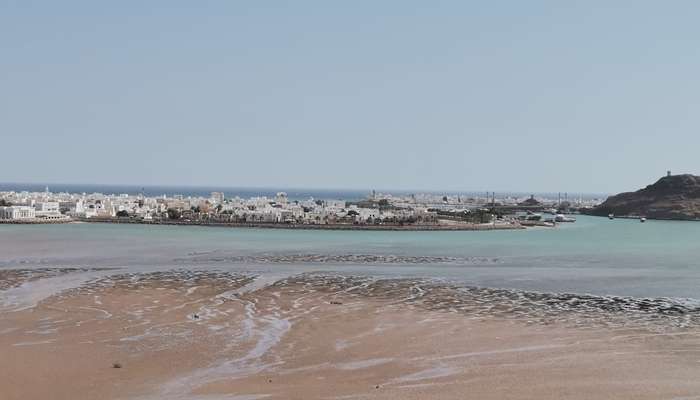
Muscat: The natural creeks (Khors) in the Wilayat of Sur in the South Al Sharqiyah Governorate and their ecosystems are important for tourism purposes. The creeks include Ras Al Jinz, Al Hajar, Grama, Shia, Al Batah, Al Rasagh, Qalhat and Tiwi. These coastal and tidal lagoons have been included in the tourism development plans for recreational and tourist attractions. Distinctive from other governorates, this year the wilayat of Sur marks the capital of Arab tourism.
Dr. Yahya bin Badr Al-Ma'awali, Governor of South Al Sharqiyah, said that there are a number of natural and tourism components in the Wilayat of Sur, including natural creeks.
Therefore, plans are afoot for cosmetic and recreational development to establish beautiful waterfronts, enhancing coastal activities, excursion tourism, camping and eco-tourism, which contribute to the revitalisation of the economic, commercial and tourism sectors.
He added in a statement to the Oman News Agency: “The first phase has been approved for the development of Al Batah Creek and includes cleaning and deepening the creek, developing tourist and investment areas in the surrounding area, and establishing investment sites on both sides of the creek, including the establishment of hotels, chalets, and tourist facilities. The second phase will include the establishment of basic services that will open broad horizons for investment."
He explained that Khor Al-Batah is one of the largest natural creeks in the Wilayat of Sur, with a total area of about 5 square kilometres. It serves as a commercial port in which commercial ships and fishing vessels of all kinds dock. It extends a distance of 4 kilometres starting from Ras Al-Mil with its famous lighthouse until the Al-Tina area in the centre of the city. On its eastern bank is the village of Al-Ayjah, and on its western bank is the main neighbourhood of the ancient city of Sur, while the villages of Nasma and Skikra are located on the south of the creek.
Regarding Khor Grama in the Ras Al Hadd Prosecution, he said: “There is a project under development, which includes establishing a tourist development marina and paving the road that leads to it. There is also a study of the project by the consultant, and its budget has been approved. With regard to Khor Al Hajar in Ras Al Hadd, a marina has been established on Al Khor for fishermen.
He added: "The governorate is currently working on implementing a beautification project to develop the Al Tinah area in Jabal Eid in the Wilayat of Sur at the end of the Khor Al Batah extension, with funding from the Omani Liquefied Natural Gas Company. The project includes a 1.2-kilometre-long walking and cycling path, an open theatre, parking for celebrations, umbrellas, and a children’s play area. In addition to seating areas, wooded spaces, and stores for renting bicycles.
For his part, Hamoud bin Hamad Al-Ghailani, the writer and researcher in maritime history, said: "The creeks that are located along the coast of the wilayat of Sur, starting from Ras Al-Jinz on the Arabian Sea to Niyabat Tiwi on the coast of the Sea of Oman, some of them arose as a result of the decline of the area adjacent to the sea, such as the creeks of Grama, Al-Hajar and Al-Batah, and some of them arose as a result of deep carving in the valleys heading to the coasts, or as a result of the overlapping of the mountain ranges of the Eastern Hajar Mountains.
He added: “Most of these creeks were historically used as ports, harbours, anchorages, and refuges from the winds and waves, and Ras Al Jinz Creek, through archaeological discoveries conducted by the Ministry of Heritage and Tourism, has many archaeological monuments that indicate the existence of a port and commercial centre in that area where arriving ships docked from the civilizations of the Indus Valley, the Hiraba, and Molokha, as well as those coming from Pharaonic Egypt.
Remnants of shipbuilding and some tools were also found that indicate their use in shipbuilding, such as bamboo sticks, reeds, and bitumen.
This creek dates back to the Majan civilization in the fourth millennium BC.
He explained that Khor Al-Hajar was used as a port and anchorage to which ships arrived, especially from the Molukha civilization, in the movement of exchanging goods. Many traces were found that indicate commercial activity in the area served by this creek. Cemeteries and houses dating back to the Bronze era were also found at the sites of Khor Grama.
Al-Khor’s ports and waters were commercially active in the nineteenth century, and it was used as a site to store fuel for British forces during World War II on the small island located in the creek; these are warehouses whose traces exist to this day.
--